Overtourism can’t be found in most dictionaries save one —Collins.
And Collins defines overtourism as:
“The phenomenon of a popular destination or sight becoming overrun with tourists in an unsustainable way.”
This is an issue.
It’s a problem.
I’ve seen it, first hand, in many places.
And I’ve read other travel bloggers’ stories on this dilemma.
Here’s my take.
Why is overtoursim happening?
The consensus is pretty simple: more people are traveling.
It’s not as expensive as it used to be.
And many countries — China is a good example — have a growing middle class.
This all equals more people descending on the iconic destinations around the world.
I also blame tourism boards with their slick — and very effective — marketing.
The best example of this is the damn Wild Atlantic Way in my beloved Ireland.
Everyone who comes to Ireland is going to end up looking for the signs and go to the places “on the Wild Atlantic Way.”
This includes the already famous Cliffs of Moher, Ring of Kerry and the Dingle Peninsula.
So we’re all essentially going to a lot of the same places instead of seeking out some lesser marketed and thus lesser touristed areas.
I’ll come back to this idea.
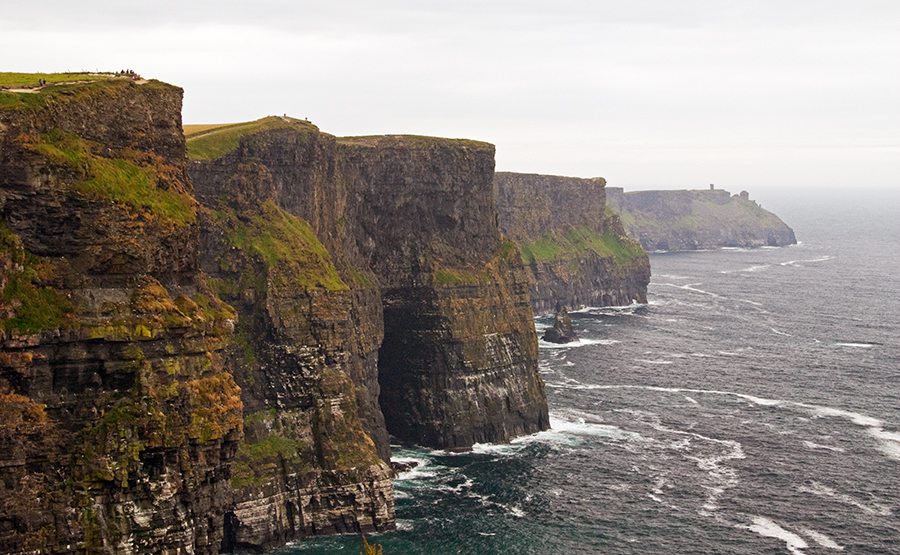
Cliffs of Moher in County Clare, Ireland. One site that sees loads of tourists!
Why is this a problem?
There’s no doubt that tourism is good from an economic standpoint as it brings money into local economies. It gives people jobs and allows for folks to have small businesses.
But overtourism is a problem in that some destinations — cities, towns, sites — can’t handle the hoards of people.
The environment may not be able to sustain the tour busses, masses of humanity walking on delicate surfaces or the need for water and electricity.
And often the locals are being pushed out by the tourists.
Venice is a prime example.
The historical section of Venice — the one we all visit — has about 55,000 permanent residents.
In contrast this area can see up to twice that many visitors in one day during the peak season with approximately 30 million visitors a year.
Wowzers!
And all those people traipsing over Piazza San Marco are going to have an impact on the air, the water, the ancient stones. Many folks leave trash, use too many plastic water bottles and have to get there via some means that probably creates air pollution.
Venice has in fact banned large cruise ships from the city and they are thinking about capping the number of visitors as destinations like Machu Picchu, Zion National Park and Cinque Terre have.
All those visitors are basically destroying an already crumbling city.
And the high prices are driving the locals out — they simply cannot afford to upkeep their family homes.
Loving places to death!

Machu Picchu in Peru. One destination that has been curtailing its numbers for years now. Photo courtesy of Pixabay.
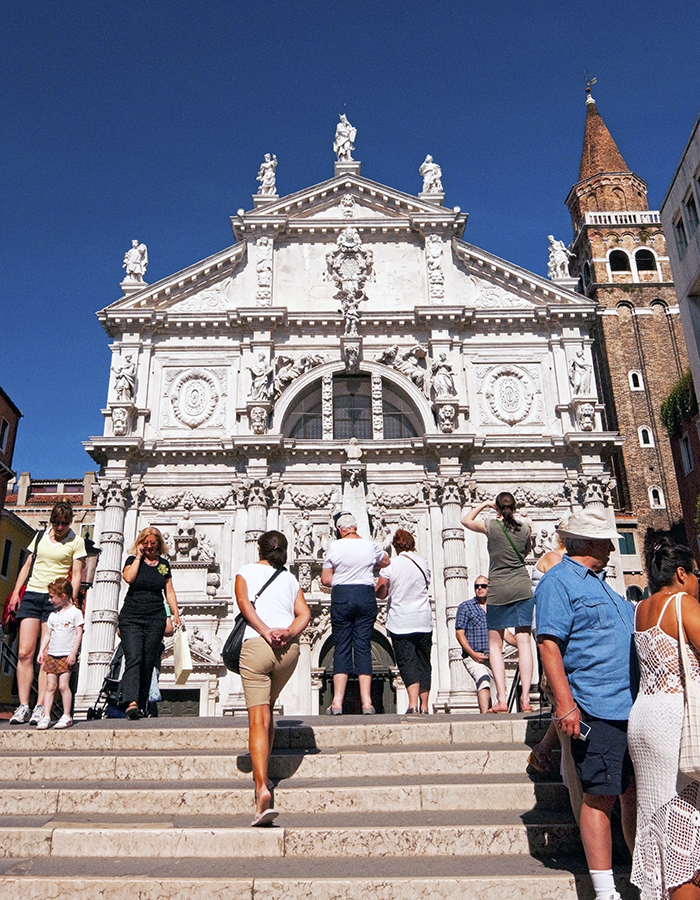
The crowds around San Moise in Venice, Italy. This was mid-June and Venice was incredibly busy!
What do we do?
This is a good question.
As a traveler and travel planner AND someone who believes in the transformative power of travel, I would never say, “Don’t travel.”
What I do promote is informed and responsible travel.
While I know you want to see Venice or Barcelona or the Galapagos Islands (Ecuador), I do think you need to stop and consider some things.
One is “Why do I want to travel to this place?”
If it’s a just because everyone else is doing it, that’s not good enough for me.
I think it’s a shitty reason.
There needs to be a good reason.
For me I wanted to see Venice because I love Italy and its history. And the Venetian history is exceptionally appealing with its maritime past, unique architecture and its creatives like Bellini and Vivaldi.
The second aspect is that if you absolutely must go to Barcelona, Venice, Dubrovnik or Cinque Terre, then please do so in a responsible manner.
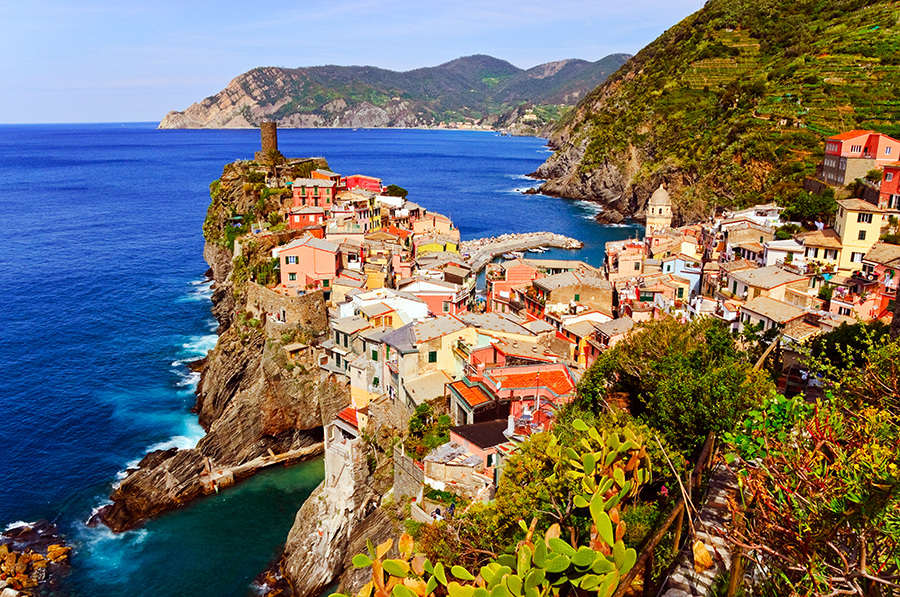
The gorgeous village of Vernazza in Cinque Terre, Italy. One of the places limiting the number of visitors. But you can still visit! Just be mindful and respectful!

Dubrovnik is stressing under the weight of its popularity. As a result they are beginning to limit the numbers. Photo courtesy of Pixabay.
Be mindful of your environmental impact.
Don’t leave trash. Don’t use plastics that end up in a land-fill because it’s not all recycled.
Be aware of your carbon footprint so walk or ride a bike when you can OR use public transportation.
Watch how much water you use.
Most of all be careful at historical sites that can be fragile and delicate. Be respectful. If you are asked to not touch something, walk on something or photograph it, then DON’T!
The third solution is to go to lesser visited destinations.
This is my favorite idea because this means you get to go to a place that perhaps doesn’t see as many tourists AND you’ll get to connect with the locals more.
To me this is a win-win.
I’ve told my clients who are going to Ireland that it doesn’t matter if you see the Cliffs of Moher on your journey.
You’re still going to Ireland.
You’ll still have seen and experienced Ireland — even if you don’t see the Cliffs of Moher.
And if you visit a place a bit off the beaten track, chances are you’ll have a richer, more fulfilling experience.
The Cliffs are gorgeous.
But I didn’t see them until my third trip to Ireland.
And while I was right by them on this last visit, I didn’t bother visiting them as the parking areas were filled by 11:30am!!
Overtourism!!!!
Instead I found some nice walks and drives to make through County Clare where I was not experiencing Ireland with hundreds of other folks.
And I saw some cool places and had a memorable visit to this part of Ireland.
Be adventurous and get out of the mindset that you have to see these iconic destinations and sites.
Because I can guarantee you that there is some other spot that is equally awing where you may be the only person enjoying it.
And that’s what you’ll remember when you’re 90!
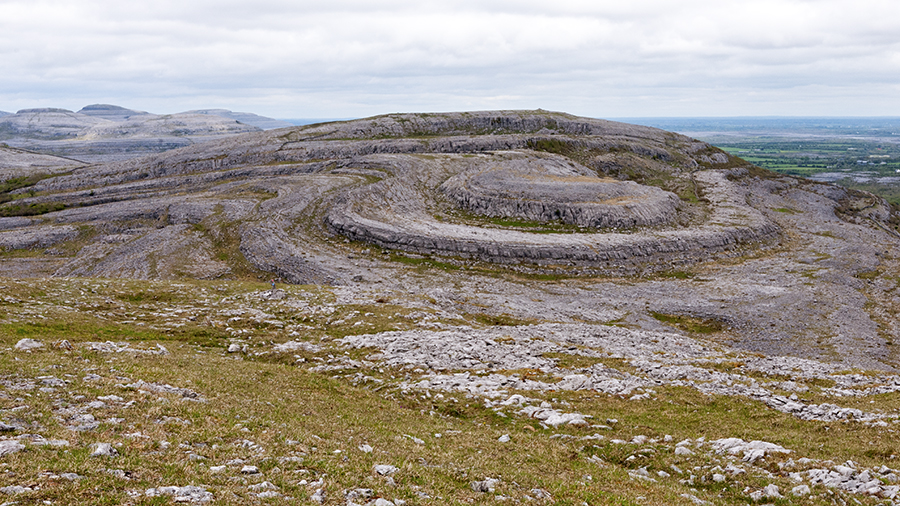
Mullaghmore in County Clare was an area that was less-visited compared to the Cliffs of Moher. No less stunning!
Ways in which destinations are dealing with overtourism
As I mentioned above, there are destinations and sites that are limiting the number of tourists — especially during peak seasons.
Often you’ll find timed tickets for visiting sites such as Edinburgh Castle.
Another suggestion is to make travel more expensive.
I don’t like this idea as I like to think that everyone can afford to travel no matter their budget.
But I can see making accommodation and entrance fees more expensive during peak seasons.
This may hinder some folks from traveling to that site or city at that particular time thus helping curb overtourism.
Limiting the number of tour operators coming to a particular site is another way to handle the numbers.
So if you have 20 tour operators bringing groups to the Colosseum in Rome each day, perhaps you have to cut that down to 15 or even 10 to keep the hoards from destroying this ancient wonder.
I can get behind this.
But some of these measures will piss people off.
I mean, if you are traveling all the way to Amsterdam to visit the Anne Frank House but don’t get to see it that’s going to suck for you.
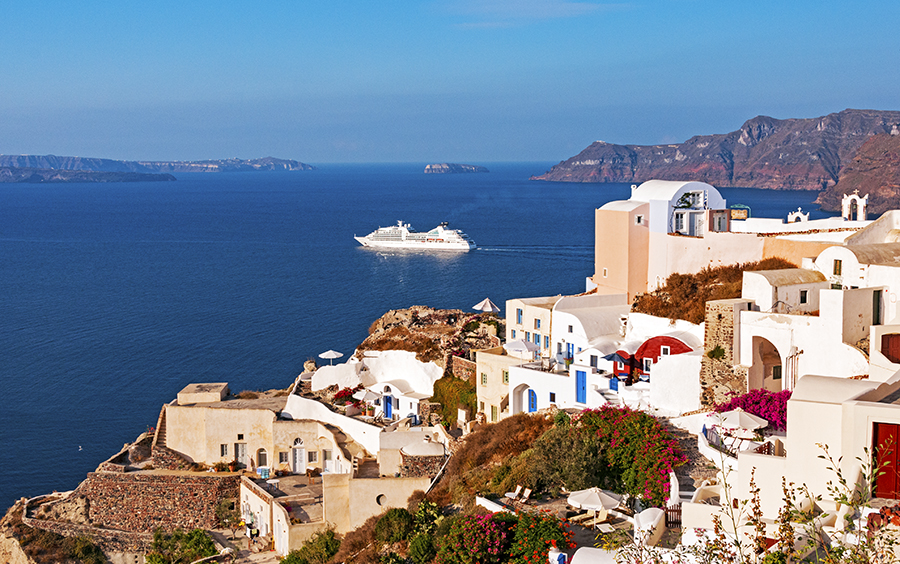
The Greek Island of Santorini is limiting the number of cruise ships to help protect this volcanic island.
Some final thoughts on overtourism
I do believe more cites and sites are going to try to control tourism.
And we all need to respect this because these places — and the folks that manage them — are doing what they need to do in order to preserve them for future generations.
I’ve seen too many people crowding Venice and making the hike up Mt Snowdon in Wales.
I’ve seen cars turned away at the Cliffs of Moher.
It’s real and it needs to be addressed.
We don’t want to love these places so much that we destroy them — or destroy what makes them special and unique.
So please be mindful as a traveler.
Be aware of your impact on each and every place you visit.
And don’t feel that you “must” visit a certain destination in order to have “been” to that city or country.
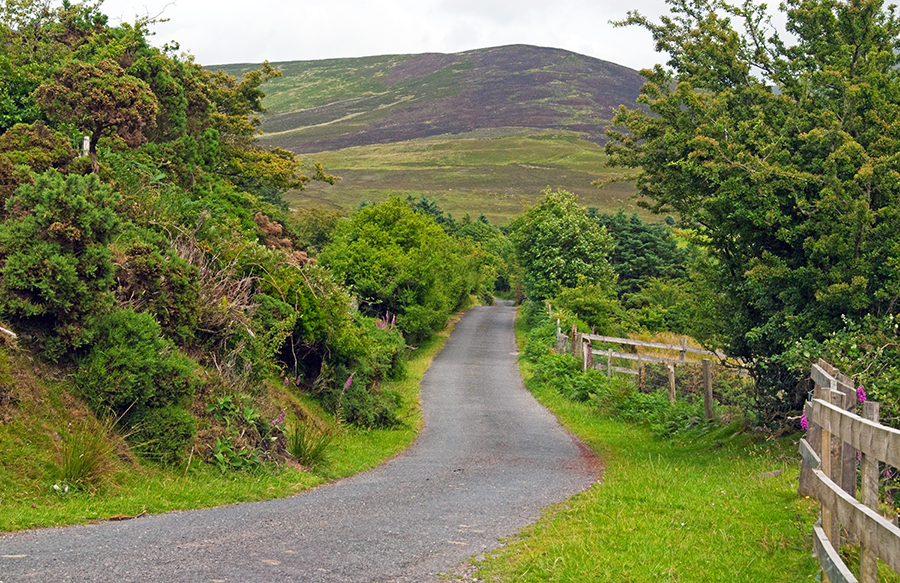
Northern County Waterford is a gorgeous alternative in Ireland to some of the more popular destinations.
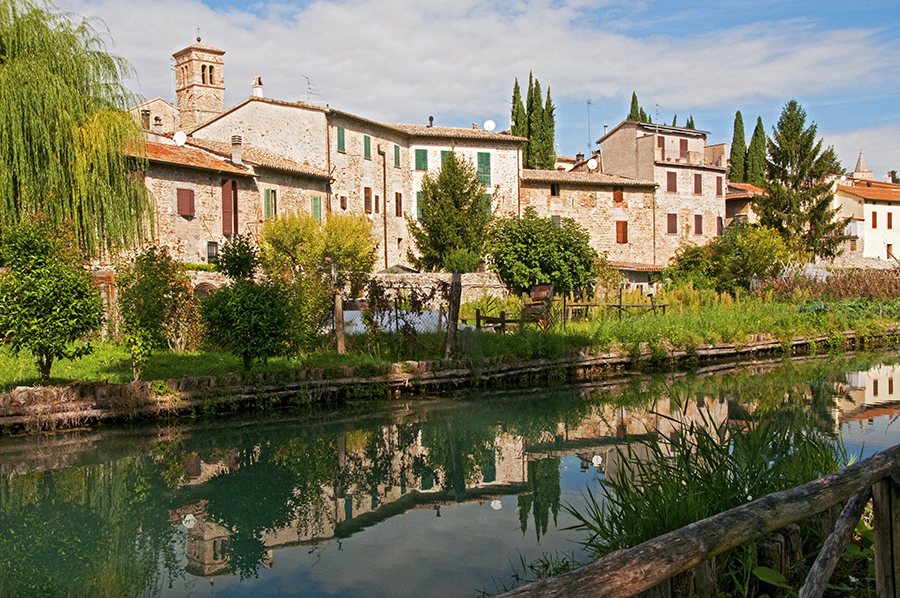
Bevagna is one of my favorite towns in the Umbria region of central Italy. It’s a fabulous alternative to some of the more popular towns in Tuscany and Umbria. As a result it’s less busy and easier to connect with the locals!
Seek out alternative spots.
You’ll be pleasantly surprised.
And if you absolutely must visit the popular destinations, be respectful and mindful.
Know that planning ahead will be essential as will being flexible in your plans.
While places are popular for good reason, I’ve learned over my 13 years of international travel that the less-visited spots are the ones that resonate with me so much more.
They’re the ones I remember with a smile on my face.
And the iconic sites I typically remember saying something like, “It was nice but it was really crowded so it took away from the experience.”
Just some food for thought…
I’d love to know what you think about this issue of overtourism.
Feel free to drop your comments below.
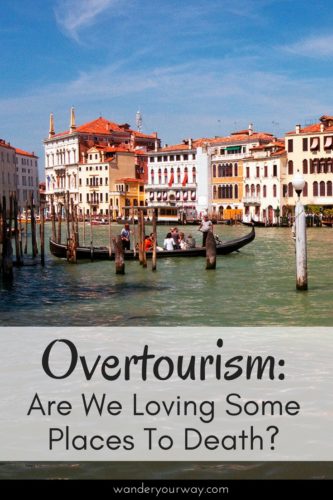








I absolutely agree! We’ve got lots of issues with overtourism in Scotland – especially the Isle of Skye, but increasingly also the NC500 area and other places. If only people would go off the beaten path a little more – the numbers would be much better distributed!
Yes, I know Skye is suffering a bit and I hate to hear about the NC500 as it’s so beautiful there. But I suspect if you get off that specific route and explore that gorgeous area away from the actual road that you’ll find fewer folks. Thanks for the comment, Kathi!
Love that question. It’s my #1 sustainable travel first step. You have to stop and consider your intention. And I agree, ‘because everyone else is’, is not good enough. Not because I’m judging it, but because it won’t be good enough for *you*. But you’ll only realise it later, and by that time, the local environment would have already been destroyed.
Completely agree!
Fantastic article! Ive wanted to touch on this subject myself but couldn’t quite find the words to explain myself lol I haven’t been to Bali but from all the stories I’ve read and the incredible amount of photos on instagram, Bali is a place of over tourism. A friend had come back from there not long ago and it wasn’t what she hoped. Dirty, busy and just the respect for the area and locals seemed to be gone.
I love exploring as close to home as possible and showing what the small towns or unknown areas have to offer. I get that places are popular for a reason, generally they’re aboslutley beautiful but I agree that at the end of the day, ask yourself why are you traveling there.. Great job!
Thanks for the comment, Lauren. I think we just need to be aware that the whole world is interesting and not just the “must see” places.
Love this post! Really thought provoking! I also find that going somewhere super busy really takes away from the experience. When I went to Venice my favourite part was wondering through some of the quieter streets away from the main touristy area. We found there was a local festival going on while we were there so visited that part of Venice quite a bit to see some of the events going on like a sailing race. But I hated the main areas on Venice because there were so busy it was difficult to see or do anything there anyway
I agree, Amy. I found Venice to be great early in the morning as I went out for a run. It was even quiet at Piazza San Marco! And this was mid-June.
I completely agree!
I have been trying to put lesser known places on my agenda because they are JUST as beautiful, but not ‘mass’ recognized.
Over-tourism is an issue for sure, but I think the trend is swinging towards more responsible ways!
I agree, Kashlee. And I think we as travel bloggers can help with this trend!
The way you delivered this made me think about being a responsible traveling in a different way than I had before. I always try to travel in offseason to avoid the crowds but had never thought to question my reasoning for wanting to visit. I’m going to Scotland in the spring. This definitely gave me something to think about.
I’m glad it has you thinking. I actually did some own reflecting as I wrote it as I want to a more responsible traveler and promote it more as both a travel planner (travel agent) and a travel blogger. I think we, as bloggers, can do our part by leading by example and writing about it. Thanks, Teri!
A very thought provoking post. In our early twenties, my partner and I explored some of the ‘big hitters’ in Europe (like Barcelona, Dubrovnik and Bruges). And whilst we enjoyed ourselves, at times the experience was overwhelming and underwhelming in places. It’s difficult to get under the skin of somewhere that’s full of visitors. So now we find ourselves makng more of an effort to get off the beaten path, and we love it! It’s much more immersive, often more beautiful and it’s easier to find great (and bugdet friendly) authentic regional food and accommodation. I hope more people start to explore this option.
Good for you, Alice. I love finding out of the way destinations and agree that they feel more authentic and yes, more affordable!!
Personally, I love to go to undertouristed places! They often appreciate the income from tourism and the experience often feels more authentic.
I couldn’t agree more, Lori!
“Why do I want to travel to this place?”
Love that question. It’s my #1 sustainable travel first step. You have to stop and consider your intention. And I agree, ‘because everyone else is’, is not good enough. Not because I’m judging it, but because it won’t be good enough for *you*. But you’ll only realise it later, and by that time, the local environment would have already been destroyed.
Thanks for the thoughtful comment, Teja. There are too many people who travel to places because everyone else is so they think they need to. As a travel planner I’ve had folks say they want to visit a spot and when I ask them “why” they reply, “Well, I thought since I’m in Ireland I just should visit Waterford or the Blarney Stone (or whatever else).” I always ask this of my clients.
Really great take on this issue and great tips for how to manage it. Personally I have always liked traveling during shoulder seasons and when I happen to be in places where there are too many other visitors, it takes away from my own enjoyment.
Yup. My Eiffel Tower experience was not a good one for that reason!! Shoulder season is a fabulous time to travel.
I loved reading this. And I agree with you – as a traveler, I’d never want to say “don’t travel there” to someone else, but if I”m being honest, the true magic of traveling not when you go to a popular site and take a cheesy tour to snap the same picture that everyone else has, but rather, when you take time to “do as the locals do.” The magic happens when you get off the beaten path and try to order off a menu that doesn’t have “tourist english” translations. It happens when you walk through a pharmacy or grocery store in a foreign place in search of toothpaste. It happens when you talk to the locals somewhere off the beaten path like a small local park where your kids are playing with theirs.
At least, that’s what I think. Venice was an amazing city and I’m glad I got to see it – but honestly, my experience staying with a family in a tiny mountain town by Lake Como was better.
Thank you for writing this!
You’re welcome, Malini. As I read your comment I was shaking my head “yes” the entire time. I so agree with your sentiments!
You are absolutely right, Lynne! Here in Scotland we worry about the Isle of Skye these days. Everyone wants to go there. Many homes are being used for Air BnB or similar, and this means that locals are having difficulty finding affordable accommodation. The island’s infrastructure is creaking at the seams – not enough restrooms, accommodation or restaurants for all the visitors at the peak of the season. Yes, Skye is beautiful, but there are many other equally – if not more- stunning places in Scotland. You don’t have to go to Skye to see Scotland’s landscape at its very best!
I know from visiting Skye in 2017 that it was quite busy although I found some spots that were much quieter. I hate to say it, but curtailing visitors may be what Scotland has to do. And I agree that there are places in Scotland that are equally if not more beautiful!!